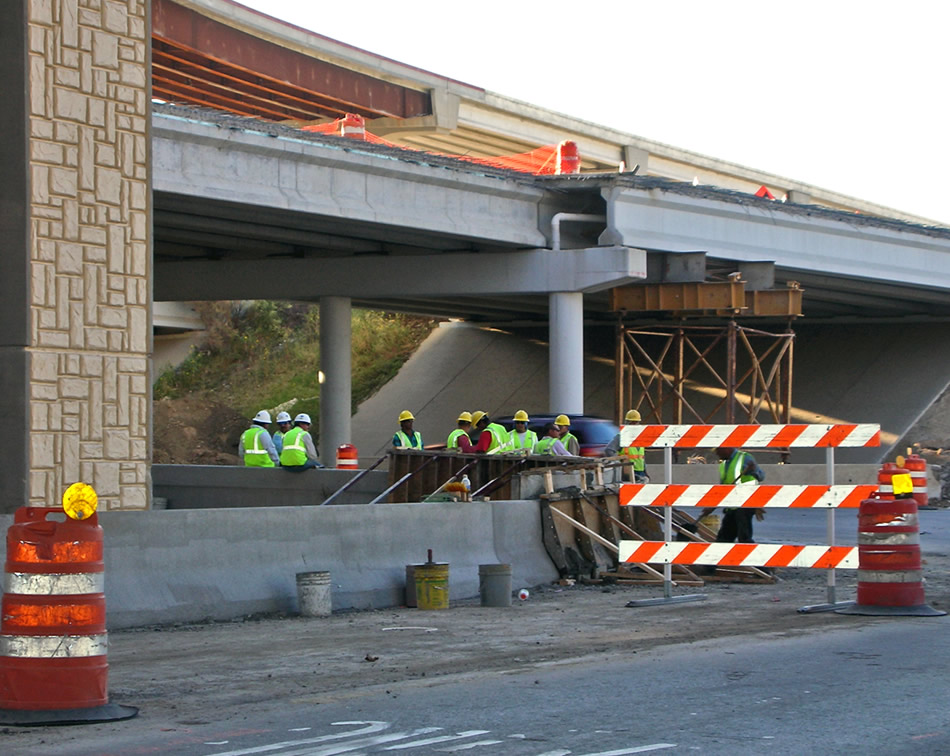Construction season is a bustling time marked by numerous projects ranging from roadworks and building constructions to infrastructure repairs and upgrades. During this period, ensuring the safety of construction workers is paramount, and one of the most effective tools in achieving this is the use of barricades. Barricades serve as essential safety devices that protect workers, pedestrians, and motorists by clearly defining construction zones, guiding traffic, and preventing unauthorized access to hazardous areas. In this detailed exploration, we will delve into why barricades are so vital for worker safety during the 2024 construction season in Florida.
Defining Work Zones: Barricades are crucial in clearly demarcating the boundaries of construction zones. By establishing a physical barrier between the construction site and the surrounding area, barricades ensure that workers have a defined space to operate safely. This separation helps prevent unauthorized personnel from wandering into dangerous areas where heavy machinery and hazardous materials may be present. Moreover, well-marked work zones minimize the risk of accidental entry by pedestrians and vehicles, reducing the likelihood of collisions and injuries.
Traffic Control: Construction projects often involve work on or near roadways, necessitating the diversion or control of traffic. Barricades such as traffic cones or traffic drums play a vital role in guiding vehicles safely around construction zones, ensuring a smooth flow of traffic while protecting workers from potential accidents. By clearly indicating detours, lane closures, and speed reductions, barricades help motorists navigate construction areas with minimal confusion and disruption. This organized traffic management not only enhances safety for workers but also reduces the risk of traffic accidents that could endanger both workers and drivers.
Protecting Workers from Moving Vehicles: One of the most significant hazards construction workers face is the risk of being struck by moving vehicles. Barricades serve as a critical line of defense by creating a physical barrier that prevents vehicles from entering construction zones. This is especially important in high-traffic areas where the presence of construction equipment and personnel can be obscured by congestion. By establishing a clear separation between
Visibility and Communication: Effective communication of hazards is a key component of construction safety. Barricades, often equipped with reflective materials, signage, and lighting, enhance the visibility of construction zones, particularly in low-light conditions or inclement weather. This increased visibility alerts drivers and pedestrians to the presence of construction activities well in advance, giving them ample time to adjust their actions accordingly. Additionally, the use of standardized signage on barricades helps communicate specific instructions and warnings, such as “Road Closed,” “Detour,” or “Workers Ahead,” ensuring that everyone is aware of potential hazards.
Preventing Falls and Other Accidents: Construction sites are rife with potential hazards, including open trenches, excavations, and uneven surfaces. Barricades help prevent falls and other accidents by restricting access to these dangerous areas. By cordoning off hazardous zones and directing foot traffic along safe pathways, barricades minimize the risk of injuries caused by slips, trips, and falls. This is particularly important for protecting not only workers but also site visitors and inspectors who may not be as familiar with the site layout and hazards.

Facilitating Safe Work Practices: The presence of barricades encourages safe work practices by fostering a controlled and organized environment. When workers know that their workspace is securely separated from traffic and unauthorized access, they can focus more effectively on their tasks without the constant concern of unexpected intrusions. This enhanced focus leads to improved efficiency and reduces the likelihood of mistakes and accidents. Furthermore, the use of barricades can help enforce safety protocols by ensuring that only authorized personnel, equipped with the necessary protective gear, enter high-risk areas.
Regulatory Compliance: Adherence to safety regulations and standards is a fundamental aspect of construction projects. Regulatory bodies, such as the Occupational Safety and Health Administration (OSHA) in the United States, mandate the use of barricades and other safety measures to protect workers. By implementing barricades, construction companies demonstrate their commitment to complying with these regulations, thereby avoiding potential fines, legal liabilities, and project delays. Compliance with safety standards not only safeguards workers but also enhances the overall reputation and credibility of the construction firm.
Emergency Response: In the event of an emergency, such as a fire, gas leak, or medical incident, barricades play a critical role in facilitating a swift and organized response. Clearly defined barriers help emergency responders quickly identify and access the affected areas, while also preventing onlookers from inadvertently entering dangerous zones. This controlled access is essential for ensuring that emergency personnel can perform their duties effectively without unnecessary hindrance or risk.
Psychological Assurance: The presence of barricades provides a psychological assurance to workers, reinforcing the notion that their safety is a priority. Knowing that there are measures in place to protect them from external hazards fosters a sense of security and well-being among workers. This positive mindset can lead to increased job satisfaction, reduced stress, and ultimately, a more productive and motivated workforce.
Adaptability to Dynamic Environments: Construction sites are dynamic environments where conditions and hazards can change rapidly. Barricades offer the flexibility needed to adapt to these changes. Temporary and movable barricades can be quickly repositioned to accommodate shifting work zones, new hazards, or changes in traffic patterns. This adaptability ensures that safety measures remain effective throughout the various stages of the construction project.
Barricades are indispensable, particularly during the bustling construction season. By defining work zones, controlling traffic, protecting workers from moving vehicles, enhancing visibility, preventing falls, facilitating safe work practices, ensuring regulatory compliance, aiding emergency response, providing psychological assurance, and adapting to dynamic environments, barricades play a multifaceted role in safeguarding construction workers. The strategic implementation of barricades not only protects workers but also contributes to the overall efficiency and success of construction projects. By prioritizing the use of barricades, construction companies can create a safer, more organized, and ultimately more productive work environment.


